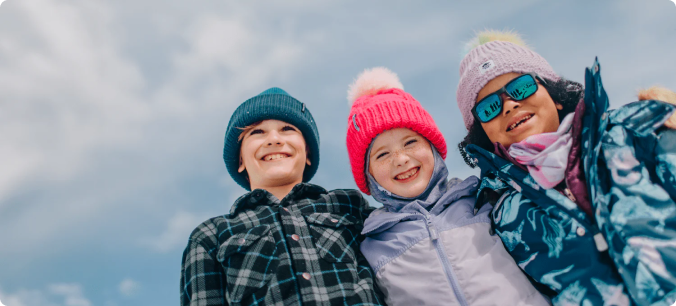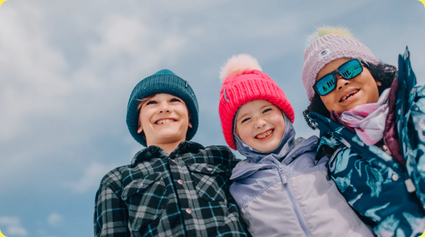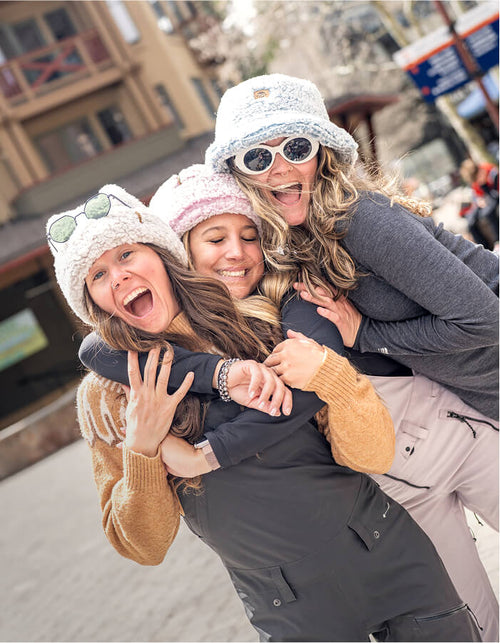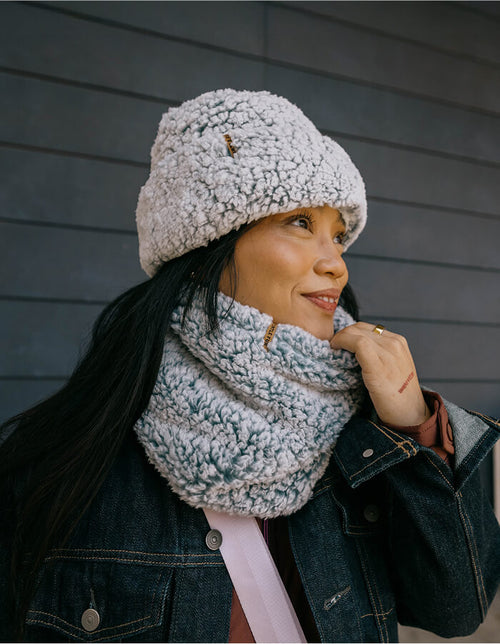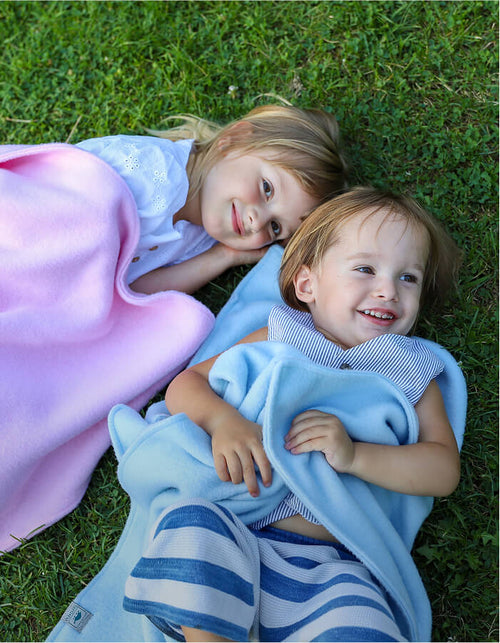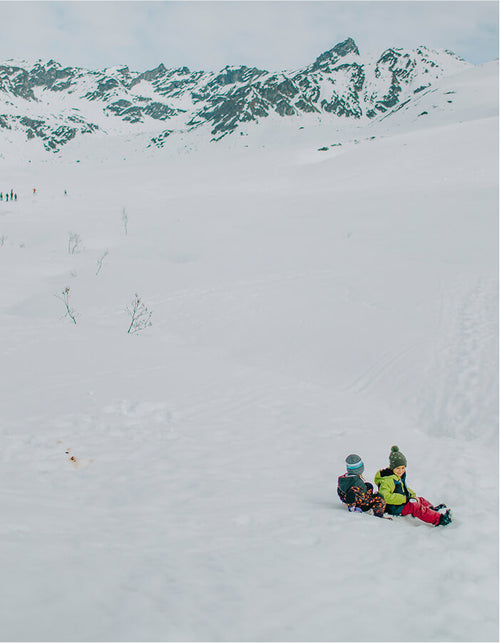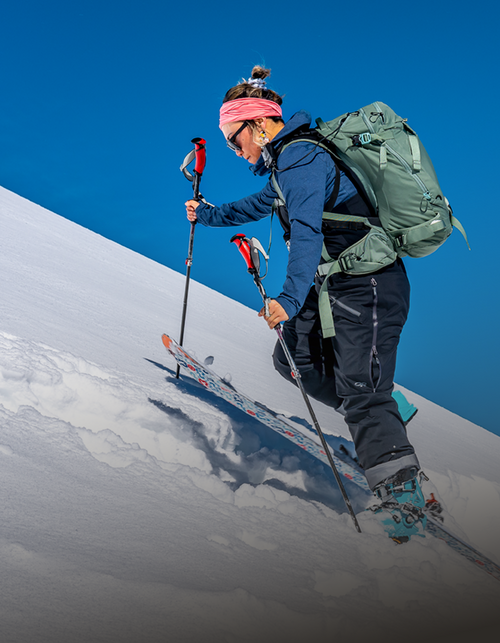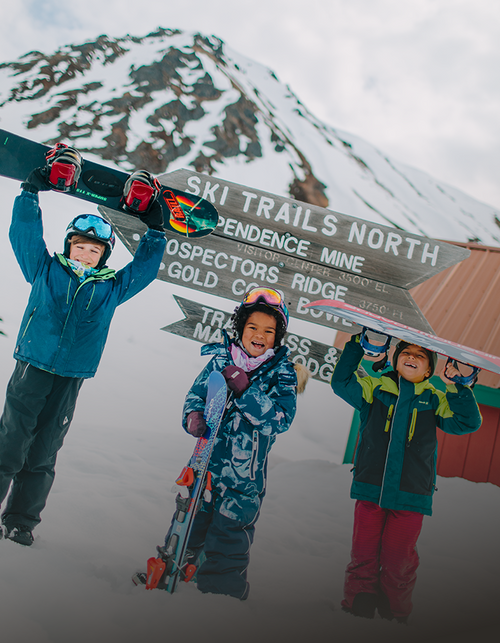How to Dress Kids for Skiing and Riding
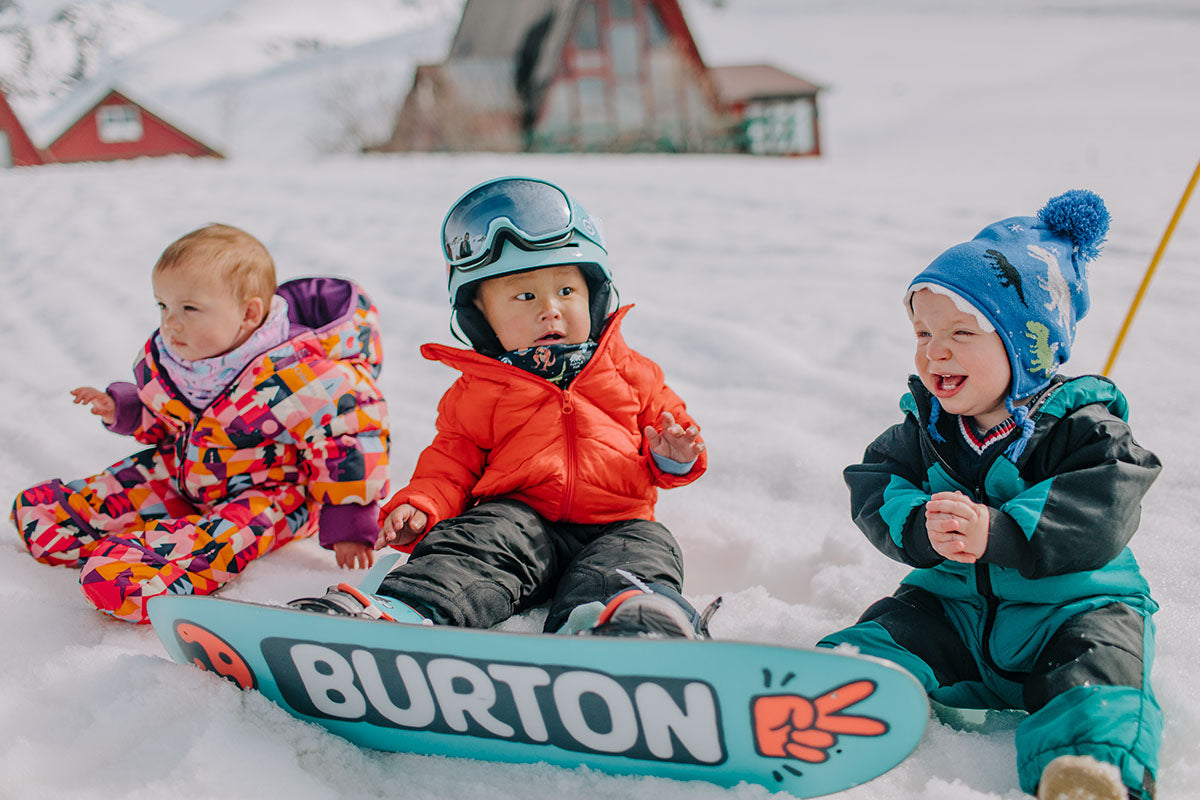
Getting your kids to enjoy skiing and riding is one thing. Getting your kids out the door in safe, comfortable gear that they won’t want to rip off is another thing. From finding the right fit, to dressing them appropriately for the temperature (and the elements), the “simple” task of dressing young skiers and riders for a day on the mountain isn’t quite so simple. But we’re here to help!

The team at Turtle Fur has been skiing or riding since we were kids – and now, many of us have kids or have raised young skiers and riders and have all the knowledge. Before we jump into the necessary accessories, here are some general tips form Turtle Fur parents:
Skiing With Kids: General Tips
-
Pack extra "accessories" in case anything get damp (socks, mittens, gloves, neck warmers, etc.)
-
A change of socks during the lunch break was welcomed by our feet!
-
Let your kids have fun with their gear (assuming not leased gear) - stickers, colorful duct tape, etc. on helmets and skis/boards allow the kids individuality. Also has the benefit of making their gear easily identifiable.
-
Throw an extra neck gaiter in their pocket to swap out when it gets wet (boogers or mouth moisture).
-
Use Shellaclavas or Overhoods for no bare necks and optimal warmth.
-
Keep hand warmers in their pockets as well as snacks.
-
Make sure to give yourself an extra 30-45 minutes in the morning. Most likely you still won’t get out on time, but you might get lucky.
-
Have them play on their ski/snowboard equipment at home. Inside on a rug first. Then out in your yard/driveway. This includes having them play in their helmet, too, to get used to it!
-
Make them take care of their gear. If you don’t, you will find gross wet things molding inside their helmet. No one wants that.
Now that we have the tips out of the way, let’s get to gear specifics.
Kids' Ski Gear You'll Need:
Helmets:
You never know when a crash could happen. And it’s not just your child’s skill level to think about – it’s everyone else’s skill level that is out on the mountain that day. So, even if your child is a novice or a pro, we encourage helmet wearing. Going to a shop to try on helmets is really the best move here, as comfort is key (the more comfortable they are, the happier they’ll be wearing their helmet all day. Modern helmets are light, comfortable, and provide good brain protection. Talk with a shop pro to make sure the fit is right!

Kids Headwear:
Choosing the right headwear is key, as heat escapes through the head and feet. So keeping those heads warm is critical for cold weather days on the mountain. For headwear, you have a few options.
-
All-in-one:
-
The Balaclava: This is a parent (and kid!) favorite. The neck/beanie combo ensures that their heads stay warm under helmets and hats, and their neck is protected from the cold, wind, snow, sleet, etc. We love the balaclava for a lot of reasons; it’s one piece of gear that offers a LOT of coverage; the neck tucks into jackets so there is no area for cold to get in; and the head coverage provides a snug fit and won’t fall off like other under helmet accessories. Turtle Fur has a few options for Balaclavas:
-
Quantum
-

-
Neck Warmer:
-
Neck Gaiter: Pending on the temperatures, you have a few options here. If it’s below freezing, and windy, you’d want a heavyweight option like The Turtle’s Neck® (made of our beloved Original Turtle Fur® Fleece) or the Double-Layer Neck Warmer made of Chelonia 150™ Fleece.
-

Kids Snow Pants & Jackets:
Our recommendation here is to hit up your local ski shop or, if you’re happy with secondhand, a ski swap in the fall. With kids growing as quick as they do, we personally love gently used outerwear. But the great thing about both shopping locally or visiting a swap is that your child can try on before buying. Jackets and snow pants fit differently for every brand and age range, and these are two articles of clothing that you want to have a perfect fit.

-
Jackets: Some things to consider are the temperatures that they’ll primarily be skiing in, and how they plan to layer underneath. There are many components of jackets that you can look out for when shopping around. Some of our favorite technicalities are:
-
Waterproof: Key to surviving snowy days and epic wipeouts.
-
Hem cinch: For powder skiing or riding, this is one of our favorite elements of jackets. The hem cinch keeps things snug around the hips, that way, when the powder is flying or they take a tumble, their jacket won’t ride up causing snow to go up their back (which, we can attest, is not a good time for anyone).
-
Vents: Pending on how heavy the jacket is, vents can come in handy on warmer days, or days when they’re working up a sweat. It just gives that extra touch of breathability to keep them comfortable.
-
Pockets: If we’re being honest, there is never a jacket with too many. When you ski or ride, you often need a lot of small things – ski pass, hand warmers, phone, extra neck warmer, chapstick, sunscreen, etc.
-
-
Snow Pants and Bibs: Just like a jacket, there is a lot to consider in addition to the fit. The first choice you have is whether you’d like a snow pant, or snow bibs (the overall style). There are pros and cons to both, but we’re team bibs for kiddos. With bibs, your little one will be less likely to experience getting snow up their back or needing a belt if the pants are a little loose. If their jacket runs short, the bib has them covered as it extends their waistline. Snow pants either need to fit perfectly around the waist, or you’ll need to get them a belt. With the bib, there is a bit of room to grow (often there is a waistline cinch, and that, combined with the overalls, mean the bibs will stay up even if a little roomy!). Kids grow fast – if you can skip a year or two of buying new gear, we’re all for it! Other things to consider:
-
Waterproof: Just as important (if not more-so) than the jacket. Having a waterproof element to their ski or snowboard pants is huge. From sitting on snowy chairlifts, to falls, to strapping the back foot in (if they’re a rider) at the top of the mountain, you want to ensure their skin isn’t getting wet.
-
Warmth: What are the conditions like where they’ll be skiing or riding? How many layers do they want to wear underneath? If they’ll be skiing or riding in single digits, you’ll want heavyweight pants, but if they’re a fair-weather mountain enthusiast and prefer bluebird skies and warmer temps, a lighter ski pant with room for layers underneath could do the trick!
-
Fit: Part of this goes back to bib vs. pants, but regardless of what you choose, how they fit is incredibly important. Snow pants should be snug, but still allow for room to move.
-

Base Layers:
How you layer your little one depends on the weather, but base layer is always key. Look for things that are moisture-wicking (try to avoid cotton, as it doesn’t wick moisture and instead let’s that moisture sit on the skin – ultimately making them feel cold). We’re a big fan of merino wool! The thing about base layers is they don’t need to be thick and bulky. If you find a wicking and comfortable option that they’ll want to wear all day, that will do the trick. The base layers job is to keep moisture from hanging out on their skin. The last thing you want is for your little one to get cold and clammy.
Mid Layers:
The job of the mid layer is to insulate. So, while the base layer wicks moisture, the mid layer will help to keep the heat in. The best thing about the mid layer is that it is the most adjustable – if you feel like your child needs a quarter zip or fleece pullover over their base layer in the morning, have them wear it! If it warms up and the sun starts shining, they can easily remove it and drop it off at the car or lodge after some runs. Again, try to avoid anything too bulky here so that when they zip their jacket up, they’re still comfortable and can move freely.
Mittens & Gloves:
Warm and dry hands are key to success for a day on the mountain. The first choice here is mitten vs. glove.
-
Mittens: Offer more warmth, but less moveability – meaning it can be harder to adjust goggles, pole straps, grab something from a pocket, pull out a phone, etc.
-
Gloves: Easier to move and make adjustments, less warmth.

Personally, we’re a big fan of a slim glove underneath the mitten. That way, if your child needs to grab something, they can take their mitten off and still have coverage on their hands.
The key to a good glove or mitten is that they’re warm AND waterproofing. Keeping their hands dry is ultimately what you’re trying to accomplish.
Socks:
Socks are a VERY important part of your child’s ski kit or snowboard kit. Look for ski specific or snowboard specific socks and choose something thin and moisture-wicking. Not only are you looking for socks that will keep their feet warm, but that will also be comfortable under ski boots or snowboard boots. Although you might think a thicker sock will keep their feet warmer, you actually want a thinner sock that fits snug – it will allow for better circulation and ensure their socks don’t bunch. Again, we’re a big fan of merino wool here! Synthetic ski or snowboard socks can also do the trick.
Skiing and riding with your kids might take a lot of prep, but we promise, it will all be worth it at the end of each successful run and at the end of each mountain day. You AND your kids will be tired and happy.
Some final noteworthy tips from our Head of Design and VP, Meghan, for how to end your day:
“Hot cocoa. Usually given at the local bar so you can also get a reward for a job well done. And always plan a hearty but easy dinner that day. Something tasty but stress free.”
Happy trails!
More Skiing Resources
Skiing With Kids FAQs:
Q: Where to ski with kids?
Before heading to your favorite resort, make sure to check that they have a bunny
slope or kids’ area where you can go to practice with your kids.
Q: Can kids ski with mittens?
A: Yes, mittens are often better than gloves for kids when skiing, as they keep hands
warmer by allowing fingers to share heat.
Q: What to take skiing with kids?
A: Pack warm layers, waterproof clothing, helmets, goggles, snacks, sunscreen, and
extra mittens or gloves to ensure kids stay comfortable and safe on the slopes.

